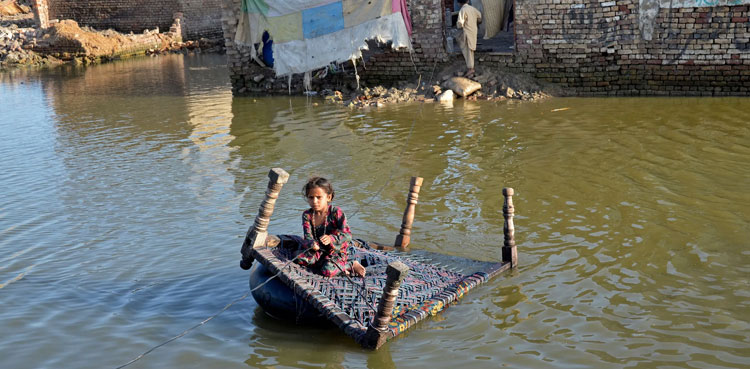Certainly! Here is a comprehensive report on Prime Minister Shehbaz Sharif’s announcement of a Climate and Agriculture Emergency in Pakistan, based on the latest available information.
🌍 PM Shehbaz Announces Climate and Agriculture Emergency in Pakistan: Comprehensive Crisis Response
🔍 1. Overview of the Emergency Declaration
Prime Minister Shehbaz Sharif announced a dual national emergency addressing climate and agricultural crises during a federal cabinet meeting in Islamabad on Wednesday, September 10, 2025. This decisive action comes in response to devastating monsoon floods that have caused extensive human casualties and agricultural damage across Pakistan. The Prime Minister emphasized that the federal cabinet made this declaration after thorough consultations to address the unprecedented challenges posed by climate-induced disasters .
📊 2. Scale of the Disaster
Human Casualties and Displacement
The monsoon floods have resulted in significant human losses nationwide:
Approximately 1,000 fatalities since the monsoon season began on June 26, 2025
Thousands injured and millions displaced from their homes
Punjab province bearing the brunt with 66 deaths and 21 million people displaced or evacuated
Agricultural Devastation
The floods have caused catastrophic damage to Pakistan’s agricultural sector:
1.95 million acres of farmland inundated in Punjab alone
Crop losses estimated at: 60% of rice, 30% of sugarcane, and 35% of cotton
National output targets for major crops now in jeopardy
💰 3. Economic Impact Assessment
The economic consequences of the floods are substantial:
| Economic Aspect | Impact Estimate | Source |
|---|---|---|
| Total Flood Damages | Rs. 409 billion ($1.4 billion) | |
| Agriculture Losses | Rs. 302 billion ($1.0 billion) | |
| GDP Growth Reduction | 0.8% (potential reduction) | |
| Projected Inflation Increase | 7.2% (from 5.5% estimate) | |
| Required Wheat Imports | Up to 5 million tons |
Brokerage firm Arif Habib revised down its growth forecast to 3.2% and warned of import pressures nearing $1.93 billion in fiscal 2026, including over 700,000 tons of cotton imports costing more than $1 billion .
🏛️ 4. Government Response and Coordination Mechanisms
🔧 4.1 Institutional Framework
The government has established a comprehensive response structure:
High-level committee headed by Minister for Planning and Development Ahsan Iqbal to coordinate relief and recovery efforts
Apex-level meeting with all four provincial chief ministers to formulate unified policy responses
Emphasis on cooperative federalism: While the federation will contribute its share, provincial governments must also actively participate
🌾 4.2 Agricultural Rehabilitation Measures
Comprehensive damage assessment of crop losses underway
Compensation mechanisms for affected farmers being developed
Focus on restoring agricultural productivity in the most affected regions
🌡️ 5. Climate Context and Vulnerability
Pakistan faces severe climate challenges despite minimal contribution to global emissions:
Ranked 8th on the 2021 Climate Risk Index
Ranked 24th on the 2023 Inform Index for vulnerability to climate disasters
Extreme vulnerability to floods, heatwaves, earthquakes, and droughts
Contributing less than 1% of global greenhouse gas emissions yet experiencing disproportionate impacts
🤝 6. International Cooperation and Support
🇨🇳 6.1 Chinese Partnership and CPEC 2.0
CPEC Phase II will focus on agriculture, with China providing 85% investment and Pakistan 15%
Minister Ahsan Iqbal scheduled to visit China on September 26 for the formal launch of CPEC 2.0
$8.5 billion worth of joint ventures and MOUs signed during PM’s recent China visit
🤝 6.2 United Nations and International Programs
Climate Resilience and Humanitarian Response (CRHR) programme (2024-2028) launched by IOM, FAO, UNICEF, and international NGOs
Supported by UK’s Foreign, Commonwealth & Development Office (FCDO) as part of Building Resilience and Addressing Vulnerabilities to Emergencies (BRAVE) programme
Focus on strengthening disaster preparedness and climate resilience in Sindh, Balochistan, and Punjab
🇺🇸 6.3 Engagement with United States
MOUs signed with American companies for mineral extraction using modern technology
Balanced foreign policy approach: Improving relations with US while strengthening strategic partnership with China
⚛️ 7. Nuclear Technology for Agricultural Resilience
The Atoms4Food Initiative assessment mission recommended innovative approaches:
Integration of advanced technologies like speed breeding and biotechnology into mutation breeding programs
Revitalizing Pakistan’s seed system to distribute improved plant varieties
Climate-smart agricultural practices including water-efficient irrigation and soil health management
📈 8. Implementation Challenges and Considerations
While the emergency declaration is comprehensive, several implementation challenges remain:
Coordination between federal and provincial governments must be seamless to avoid delays
Funding constraints may limit the scale of response and recovery efforts
Infrastructure limitations in remote and flood-prone areas
Need for continuous international support to supplement national resources
💎 9. Key Recommendations from Business Forum
The Pakistan Business Forum (PBF) proposed several measures that influenced the emergency declaration:
Immediate declaration of agricultural emergency
Large-scale canal infrastructure projects in Punjab and Sindh
Interest-free loans up to Rs. 2 million for small and mid-sized farmers
Action against illegal encroachments along riverbanks
Strengthening of revenue and irrigation departments
Activation of District Price Control Committees to curb hoarding and profiteering
🏁 10. Conclusion and Future Outlook
Prime Minister Shehbaz Sharif’s declaration of a dual climate and agriculture emergency represents a critical response to unprecedented environmental challenges facing Pakistan. The comprehensive approach addresses both immediate humanitarian needs and long-term structural reforms necessary for building climate resilience. While the scale of devastation is substantial – with nearly 1,000 fatalities and extensive agricultural losses – the government’s coordinated response, international partnerships, and focus on sustainable reconstruction offer hope for recovery. The success of these measures will depend on effective implementation, continuous monitoring, and adaptive management as climate patterns continue to evolve.







